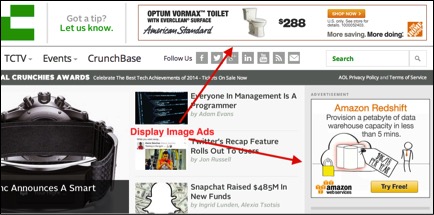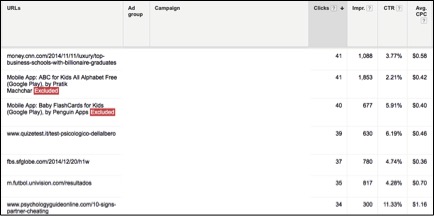Are you new to running campaigns on the Google Display Network (GDN)? Looking for a way to optimize your automatic placements campaign? Thinking managed placements is the way to go? Here’s something to keep in mind as you continue to develop a strong presence on the Display Network.
Setting up Keyword Contextual Targeting campaigns on the GDN is a great way to target your ads to potential consumers based on the type of website or content they’re currently viewing. Google takes the keyword list you’ve set up, scours their massive Display Network for similar content, and serves your ad to already engaged, like-minded users. It’s a great way to not only increase exposure for your account, but to do so in a targeted manner.
For example, say you’re selling baby carriages. The GDN will place text and/or image ads on relevant, like-minded sites speaking about baby products and other mommy-related sites and blogs. While users aren’t actively searching for your product at that time, you’re targeting people of that mindset.
Below is an example of display image ads running on a Google Display Network placement, showing different image sizes on the site.

In Google’s Support Center, they suggest adding “your highest performing automatic placements to your managed placements. To be more competitive and increase your potential exposure on a particular site, consider increasing your bid for that site.”
What they fail to tell you is how the auction process changes from automatic to managed placements and what the advertiser should do with the automatic placements now that they’re targeting managed placements.
When you choose to set up a managed placements campaign, you’re competing against all the other advertisers for the chance to show in the #1 position and be the only ad showing. You’re no longer one of many (depending on the ad size, the numbers of spots can change) ads showing, you’re the only one and the competition is more aggressive.
With an automatic placements campaign, it’s much easier to increase overall exposure and gain increased impression and click volume. After all, you don’t have to outbid all other advertisers for that one spot.
Let’s just say for argument’s sake you’re running an automatic placements campaign and seeing great results. You want to know how you can capitalize further and suddenly you think, “Managed placements! I can target all the sites delivering great volume at an efficient CPA individually.” Keep in mind it’s not as simple and straightforward as this.
Optimizing your automatic placements/ keyword-targeting campaigns is where a lot of people tend to run into some issues. Typically, this will lead you to identifying placements that are delivering a strong volume of conversions at an affordable CPA. At this point you’re faced with a decision: do you take those placements that have been performing so well, split them out in a managed placements campaign and negate them from the original campaign?
Most people assume they should take similar actions in Display as they do in Search when they split out high-performing ad groups into their own campaigns. That’s the normal thought process and a very common mistake people make when optimizing their GDN campaigns. While the logic initially makes sense, the logistics behind Google’s auctioning process doesn’t always match up and lead to positive results.
When you identify a placement that works from your automatic placements campaign and split it out into a managed placement campaign, it is not uncommon to see a significant drop in volume if you’ve also negated that placement from automatic placements. The best way to combat that would be to run that placement in both the automatic and managed placement campaign, while also bidding a little higher in managed placements to gain exposure on a site you know works for the account. By layering your targeting in this way, you won’t risk the valuable conversions you were gaining on automatic placements, but supplement them with your managed placement campaign.
One other option to consider when setting up managed placements is to target specific pages within a site, not just the site itself. In some instances, a specific page within a site is the only relevant placement worth targeting for your account, so make sure you’re not targeting the entire site as a whole. For example, if you’re looking to target people interested in getting their business degree you can target this page:
money.cnn.com/2014/11/11/luxury/top-business-schools-with-billionaire-graduates
As opposed to just cnn.com if you feel that particular article will drive higher quality traffic. You can find sub-domain placements for managed placements by running a placements report in your current GDN campaign.
Below is an example of a GDN placements report, where you can find sub-domain placements to target, as well as sub-domains to eliminate from your ad groups/campaigns.

Conclusion
Optimizing your automatic placements campaign may not be as straightforward as you originally thought, but in the end, it’s all about testing to grow your account and optimize overall performance. Just make sure you take all things into consideration, layer your targeting and analyze the site placements to ensure relevancy.



